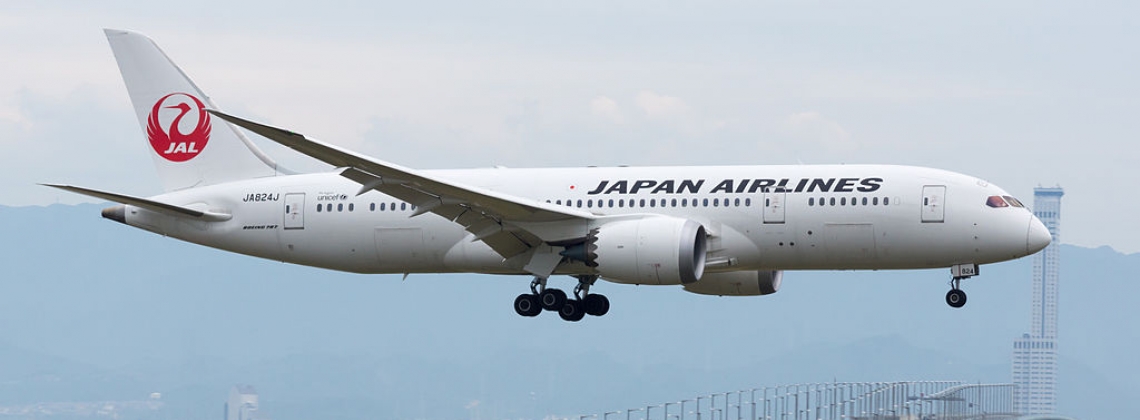Japan Airlines ready to take on regional rivals with new LCC

Who does not want to tap the growing demand for air travel in Asia these days? Particularly, its booming budget travel market. You may have heard about the latest airline to join the competition, when on May 14, 2018, Japan Airlines (JAL) announced it is going to launch a brand-new low-cost carrier business for the international market. On June 4, 2018, the company released new details about its ambitious venture, including its fleet expansion plans.
With the announcement, Japan Airlines stated that its new LCC business “will aim to provide customers with new options when traveling to/from Japan” by offering medium to long-haul flights to select destinations in Asia, Europe and the Americas from the new carrier’s hub, which is to be Tokyo’s Narita International Airport (NRT).
And why the new venture? The Japanese operator says it is looking “to develop and cultivate new business opportunities”, starting with a new LCC, it seems. In alignment with the company’s Medium Term Management Plan for fiscal year 2017-2020, the new carrier is said to be part of JAL`s `10 Year Grand Design` strategy aimed at accelerating the company’s growth.
The Japanese company will reportedly invest between $91.44 million to $182.88 million (JPY10 billion to JPY20 billion) in the LCC business, aiming to reach profitability within three years from the launch of the airline, which will be a consolidated subsidiary of the JAL Group.
The new carrier is to be established this summer, in July 2018, and to start commercial flights on international routes in the summer of 2020 with two Boeing 787-8 Dreamliners, the Group’s initial plans indicated. It will also reportedly operate to some of the same destinations that JAL already serves.
Although not many details have been released yet, on June 4, 2018, JAL director, Masaru Onishi, shared new information about the venture, stating that the budget carrier will add two 787s every year. JAL is also in talks with Boeing about the possibility of converting some of its existing 787s for the low-cost subsidiary or ordering new jets, Bloomberg reports.
“In the case of Japan Airlines we can introduce five or six aircraft a year based on our size. Maybe two aircraft a year is very challenging for a new airline but we hope they can expand at that kind of pace,” Onishi was quoted as saying by Reuters.
Onishi indicated that the new budget carrier will begin flying to Southeast Asia initially. The first destination, however, has not been named yet. Meanwhile, the company is said to be assessing the timeframe to begin services to Europe and the U.S.
Better late than never
Onishi provided further details, stating that the new carrier will be able to lower per-seat costs by 50% compared with the parent airline while also taking a more experimental approach to its product. It will be designed to cater to a broad group of both Japanese and foreign passengers, offering a mix of budget and premium options for meals and seats, Reuters cites him as saying.
But as attractive as this may sound, the company should not expect things to be easy. JAL will be competing with the Malaysia-based AirAsia Group, which has affiliates in Indonesia, the Philippines, Thailand and Vietnam. More importantly, the Group has a long-haul low-cost carrier AirAsia X. And to make things more intriguing, the new carrier’s first flights – to Southeast Asia – will be on AirAsia’s turf.
“Taking on an incumbent as experienced as AirAsia is going to be a tough gig for Japan Airlines but, with Asia being such a huge aviation growth market, there’s probably room for more competition,” commented Patrick Whyte of Skift News.
And let us not forget the low-fare airline Jetstar Japan – a joint venture between JAL and Qantas Airways low-cost brand Jetstar – which features domestic and short-haul international flights. Jetstar Japan competes against Japanese All Nippon Airways’ (ANA) budget units Peach Aviation and Vanilla Air in the domestic low-cost market.
Looking closer at Japanese aviation market, it is apparent that it is dominated by full-service airlines (JAL and ANA). Unlike in Southeast Asia, budget travel has been slow to take off here. Which is why ANA and now JAL are trying to catch-up by expanding their low-cost businesses.
For instance, ANA recently announced it will launch medium-length international flights as it integrates its two low-cost units under the one and same Peach brand name. It is set to launch medium-haul international flights in 2020, the same year as JAL’s new low-cost unit will begin flying internationally.
Meanwhile, JAL, which holds only a minority stake in Jetstar Japan, said it would continue to invest in the carrier: “To date, JAL has remained committed to refine its own full service carrier model while making key investments into Jetstar Japan. When JAL establishes the new LCC business, the company aims to create new demand, working along with the successful services provided by Jetstar Japan.”
To be clear, the soon to be launched long-haul carrier is a completely different concept from Jetstar Japan, which, according to JAL’s President Yuji Akasaka “is purely short-distance”. Jetstar Japan has given its approval for the move, saying the new budget airline would be complementary to its services since it would bring more international visitors to Japan who would then travel on its domestic network, Reuters reports.
Source – AeroTime

